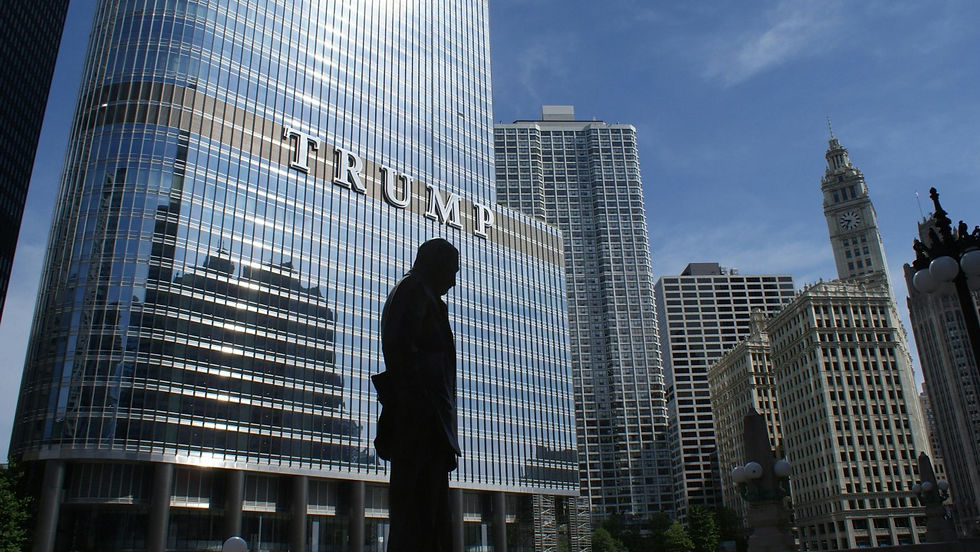Labour's Mission for Growth
- info060991
- Oct 3, 2023
- 4 min read

In the run up to Labour Party Conference, Trafalgar Strategy will be diving into Labour’s policy process and the pledges it is making to win over voters ahead of the next election
In the fourth instalment of our series, we share our guide to Labour’s approach to growth.
Labour have promised that the most important of their five missions in government will be growth. However, there is scant detail in their briefing document on achieving “the highest sustained growth in the G7 – with good jobs and productivity growth in every part of the country making everyone, not just a few, better off.”
There are some sensible and widely accepted diagnoses - low investment, regional inequality, policy uncertainty. As is usual in these kinds of documents, Labour’s diagnosis is bolstered by some economic doom and gloom to show the need for action. Unfortunately for Labour’s argument (but fortunately for the country), the UK’s economic growth has recently been revised so we’re no longer on track to be the worst performing nation in the G7 this year. However, the state of growth in the UK is still pretty paltry.
So how does Labour plan to tackle this problem? They set out a five part plan:
Providing Certainty and Stability:
Introducing clear fiscal rules with an enhanced role for the Office of Budget Responsibility.
Establishing a new Office for Value for Money to oversee government spending.
Setting out a modern industrial strategy and creating an Industrial Strategy Council to advise on implementation.
Seizing New Opportunities:
Providing catalytic public investment through the Green Prosperity Plan to support industries of the future.
Updating the planning system to remove barriers to investment in new industries.
Reforming the British Business Bank to make more patient capital available to new and growing businesses.
Ensuring All Parts of the Country Contribute:
Introducing a Take Back Control Act to empower English towns and cities to develop growth plans.
Establishing a National Wealth Fund to invest in new industries across the country.
Facilitating the development of self-sustaining innovation clusters by universities in local areas.
Giving Working People Skills and Opportunities:
Improving the flexibility of the apprenticeship levy to boost training and skills.
Granting more power and flexibility to local areas to run employment support services.
Assisting first-time homebuyers and building more affordable homes through planning and housing reforms.
Building a Resilient Trading Economy:
Making Brexit work by addressing issues in the government's Brexit deal and reducing red tape for industries.
Establishing Great British Energy to enhance energy security.
Creating a supply chain taskforce to review critical sector supply chain needs.
Many of these policies sound great but the devil is in the detail. The party has slowly been putting flesh on the bone of some of them. For example, Shadow Chancellor Rachel Reeves recently set out the new fiscal rules for the Office for Budget Responsibility and we will be looking at Labour’s industrial strategy later in this series. However, for now the document is an indication of policy announcements to look out for - rather than a document that can substantially inform what a Labour government would look like.
For now this also means Labour is yet to substantially address the key challenges it has diagnosed. Is reforming the apprenticeship levy (again), cutting red tape (again) and developing clusters around universities (again) going to address multi-generational low inequality? Similarly, is devolving power (again) setting out an industrial strategy (again) and introducing new funds for future industries (again) going to solve regional inequality when London disproportionately continues to act as a magnet for UK and global talent and investment? Too many of Labour’s topline solutions sound too similar to what has been tried before. Better execution of policies may help. But if not, then how does Labour tackle the fundamental issues with the UK economy it has identified?
What the document does show is Labour planting a flag in traditional Tory territory. Growth is defined as “the biggest economic challenge we face.” Indeed, Labour argue that good public services and reduced poverty are only possible with economic growth - perhaps an acceptance of Tory orthodoxy? There is some nuance though, with Labour adding that better public services lead to a healthier, highly skilled workforce and that high pay boosts local economies.
The reality is that under Rachel Reeves new fiscal rules there may not be any money to invest in public services - expect to see lots of low cost policy interventions come out of Labour in the coming months. However, with Labour placing equal value in growth and strong public services the other danger is that Labour’s approach to the economy becomes a chicken and egg approach. Neither is prioritised. To be fair, the correct answer is probably a balance of the two but the machinery of government does not always react well to nuanced orders.
The final challenge Labour have set for themselves in the document is how they measure success. When in power, government press machines like to pick and choose which metric they use. Labour have listed four: growth compared to other G7 countries, living standards, productivity, and the availability of good jobs. The reality is that a Labour government might be doing well on one metric but poorly on another. This could lead to a future Labour government focussing on different policy levers to address different metrics at different times. And from a communications perspective, it leaves them open to the attacks that all politicians dread: a broken economy and broken promises.




Comments